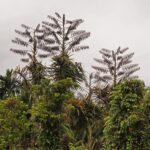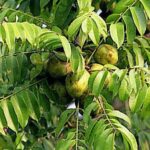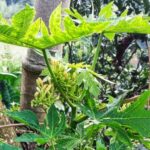The Pandanaceae botanical family comprises the following six species in Papua New Guinea:
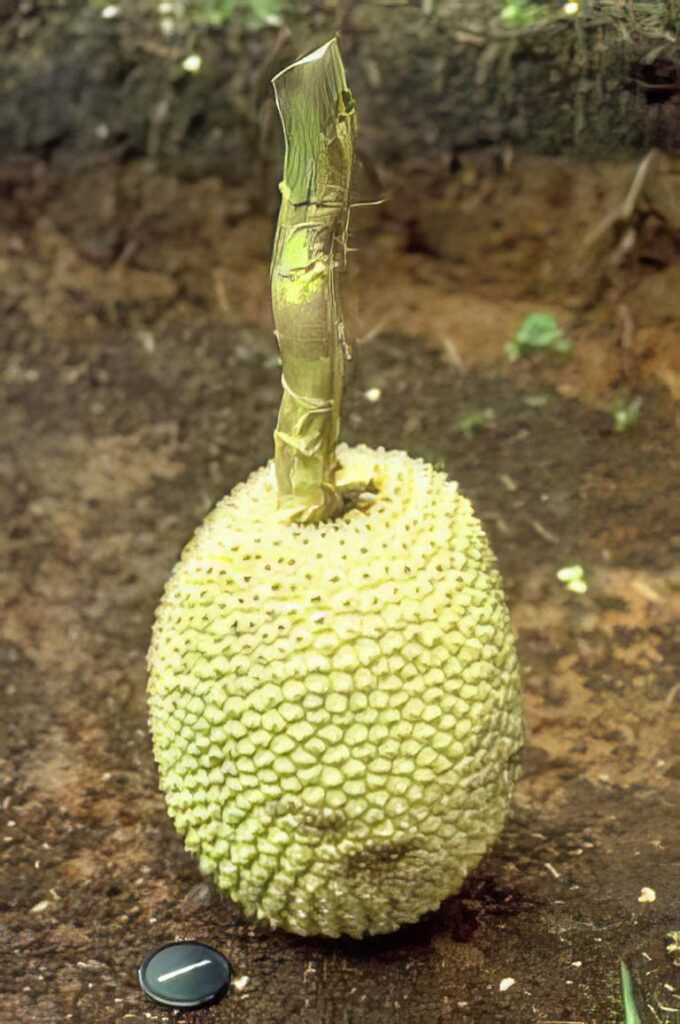
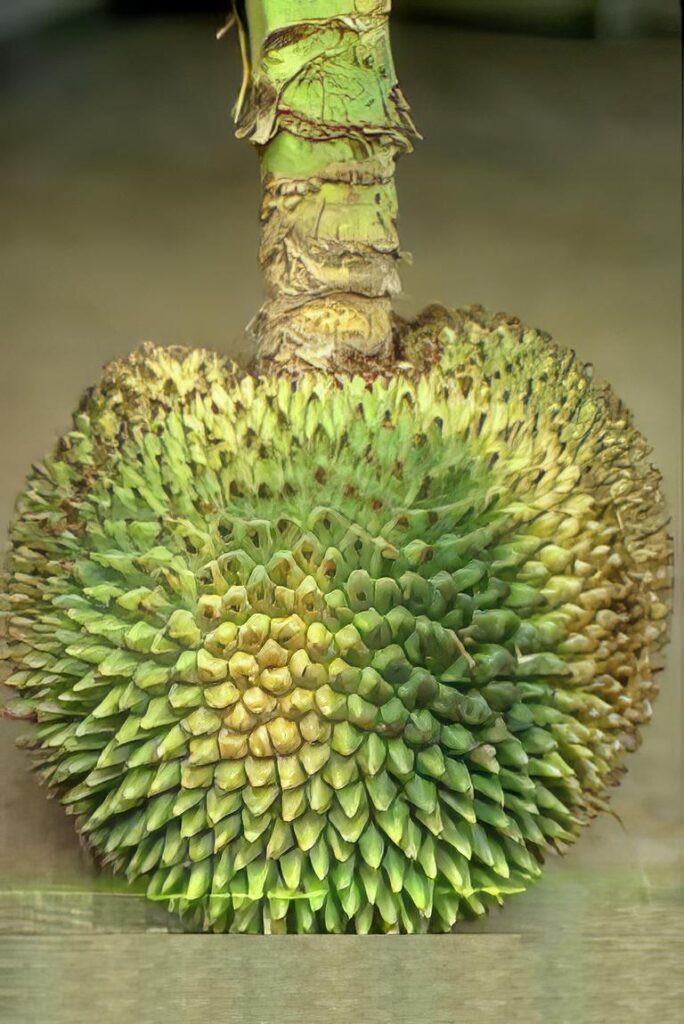
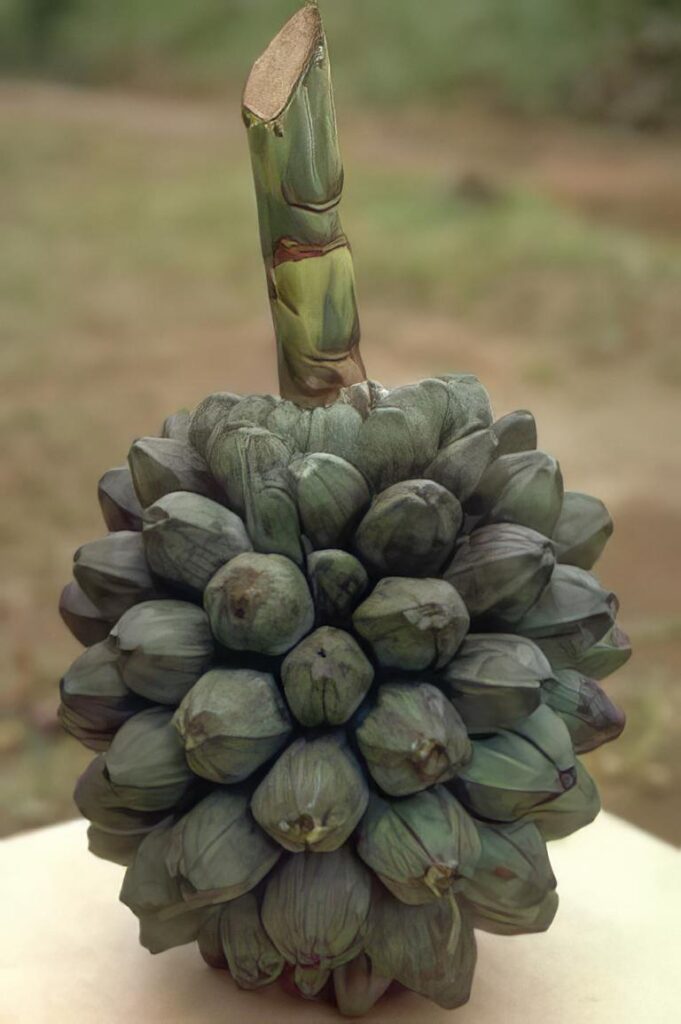
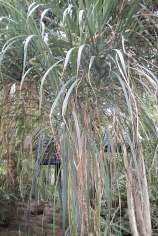
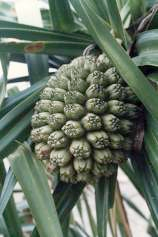
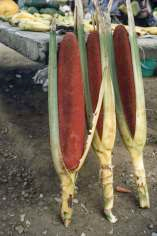
‘Karuka’ and ‘Marita’ were already discussed on this website in two former articles. ‘Karuka’, see here, and ‘Marita’ see there. In the following, ‘Wild Karuka’ and Pandanus antaresensis will be presented.
Wild Karuka (Pandanus brosimos)
Tok Pisin: Karuka
The wild Karuka plant.

The wild Karuka plant looks a lot like the cultivated Karuka. The leaves are bigger and normally they point straight up instead of bending over at the top. The trunk of the tree is straight like a palm, but it can have some branches near the top. The leaves are long and have thorns along the edge. Dead leaves normally hand down around the top of the tree.
The fruit is a round cluster of nuts. The ends of the individual nuts come to a sharper point than in cultivated Karuka. The shell of the nuts is very hard. Different varieties of wild Karuka are recognized. These have different shaped nuts. Other small differences are also noticed by village growers.
Sometimes another pandanus that grows in grasslands and bush in the highlands is also called wild Karuka. This pandanus has much larger individual nuts. It has the scientific name Pandanus antaresensis and is described in a separate article.
Where does wild Karuka grow?
Wild Karuka (and cultivated Karuka) only grows in Papua New Guinea. Wild Karuka only grows in the high mountain areas although sometimes people transplant an occasional tree down to lower places where they have their gardens. It grows between 2500 and 3100 metres altitude above sea level. In the Southern Highland Province, wild Karuka can be seen growing beside the roads that go to Tambul, Kandep and through the Tari gap. It is also in the bush in other high mountain bush places, but you have to walk in to see it. Often plants are just scattered singly through the bush.
Who owns the wild Karuka?
Normally the wild Karuka belongs to the clan on whose land it is growing. Different clans have different areas of wild Karuka. The pattern may vary in different places but the commonest method of looking after wild Karuka in the SHP is: The clan own the Karuka. Individual people within the clan are permitted to look after different sections or trees. These people clear the bush near the base of the tree and build traps to stop tree kangaroos. When the tree bears fruit, the person who has been looking after that tree is allowed to share that fruit with the other people in his clan. At Karuka nut time often lots of friends come from other places to eat Karuka.
What does the fruit look like?
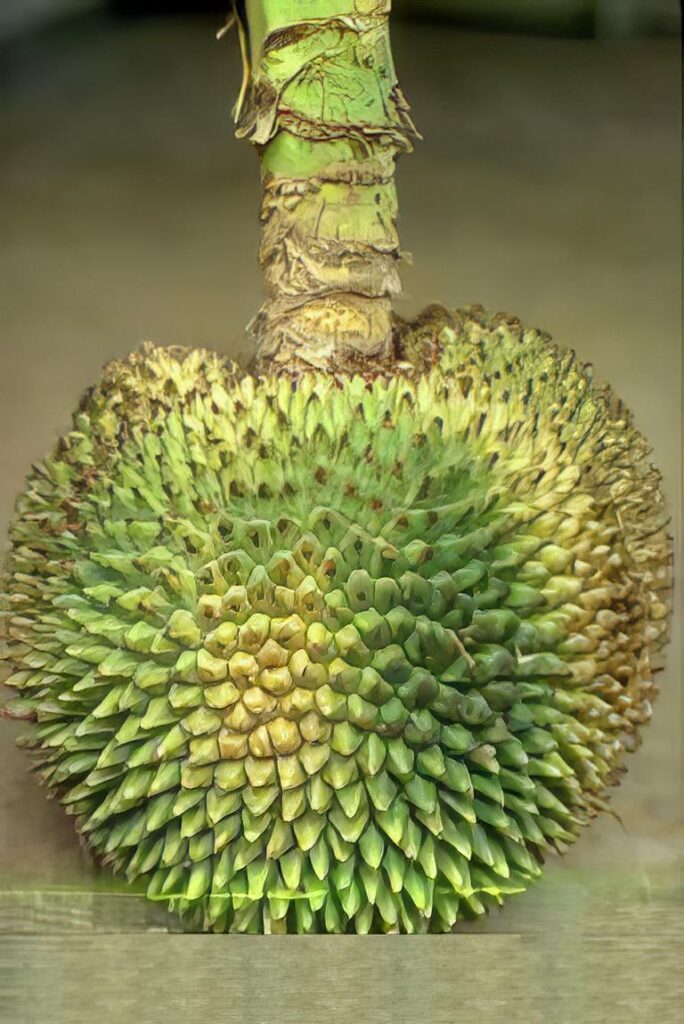
As a wild Karuka plant is getting ready to produce a bunch of nuts the leaves at the top of the tree go tightly together and stick straight up. Then the top of the leaves become a red colour (With cultivated Karuka the top of the leaves changes to a white colour.) The round clump of nuts grows out of the top of the tree amongst the leaves and then falls over to hang near the trunk amongst the dead leaves.
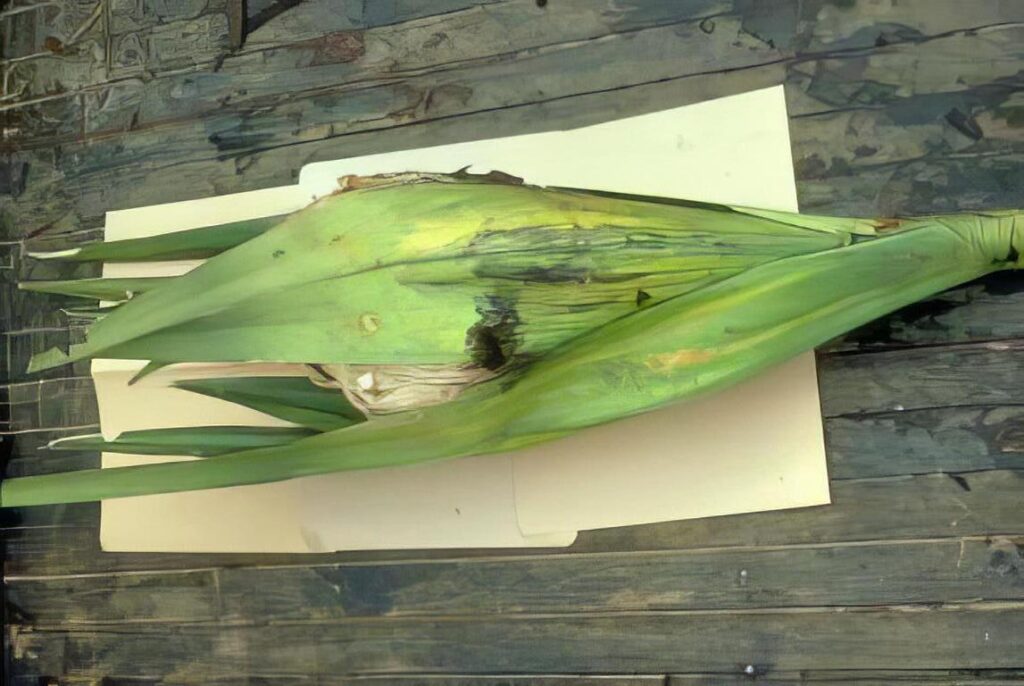
The fruit has green leaf-like bracts over it. If these green bracts are taken off, the clump of nuts that make up the fruit looks like this next picture.
Harvesting wild Karuka
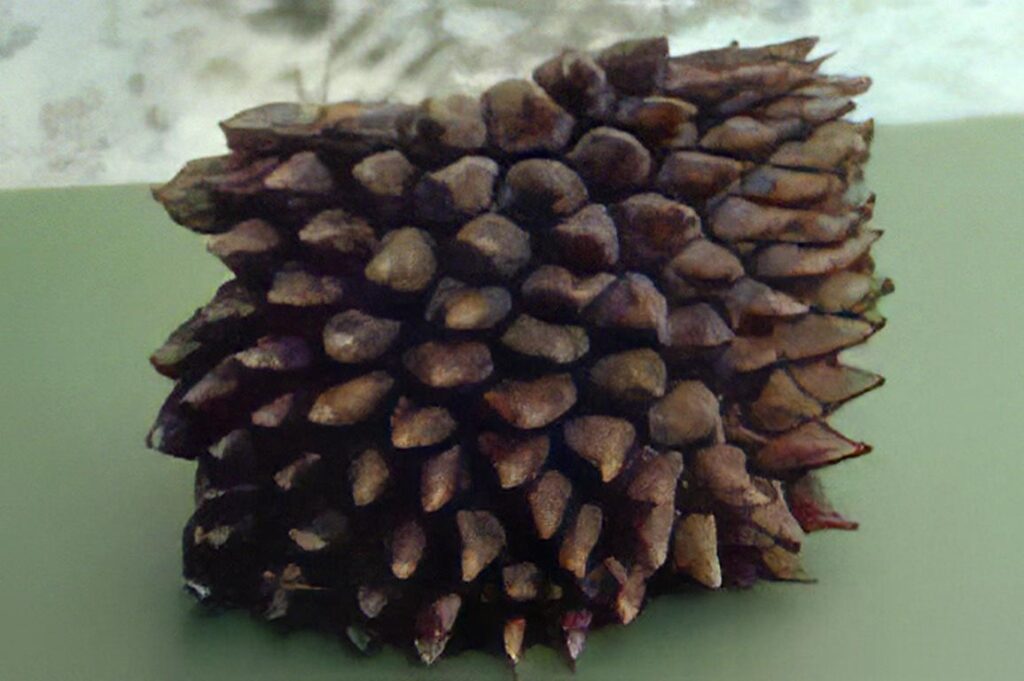
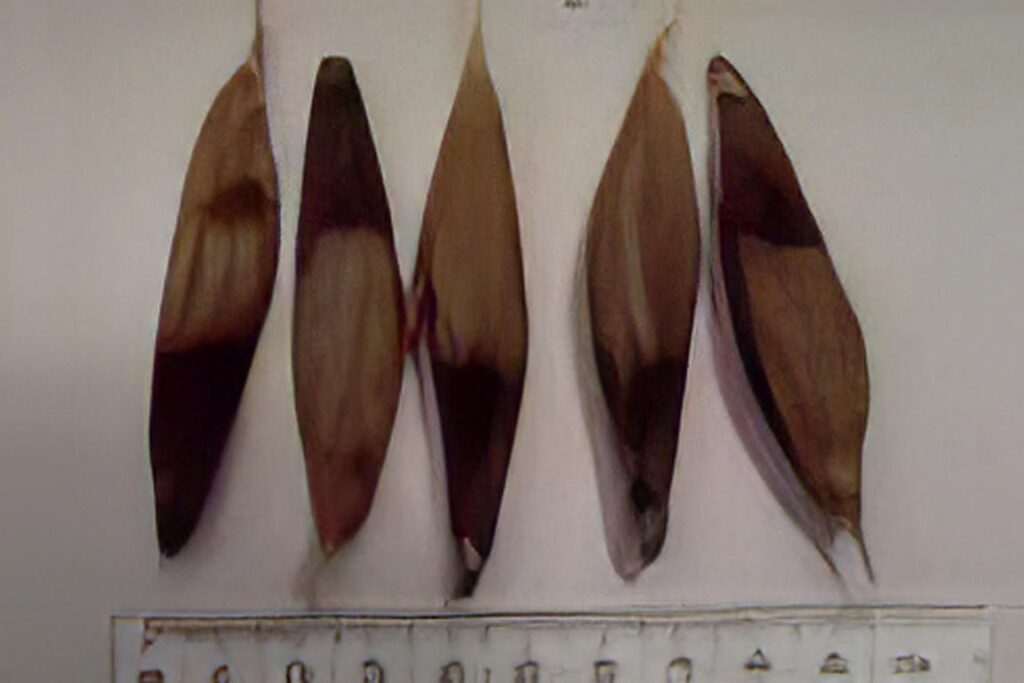
Sometimes the fruit is not harvested by climbing but the nuts are allowed to fall. At least when the first few nuts start to fall people know the Karuka is ready for harvesting. The shells of wild Karuka nuts are very hard. They are broken with a stone or axe. Sometimes the nuts are buried in the ground to let the shells soften before breaking them open to eat the kernel.
During the wild Karuka season, families often go to the bush and take their pigs. They build temporary houses from the leaves of Karuka and stay in the bush living off Karuka nuts and wild animals.
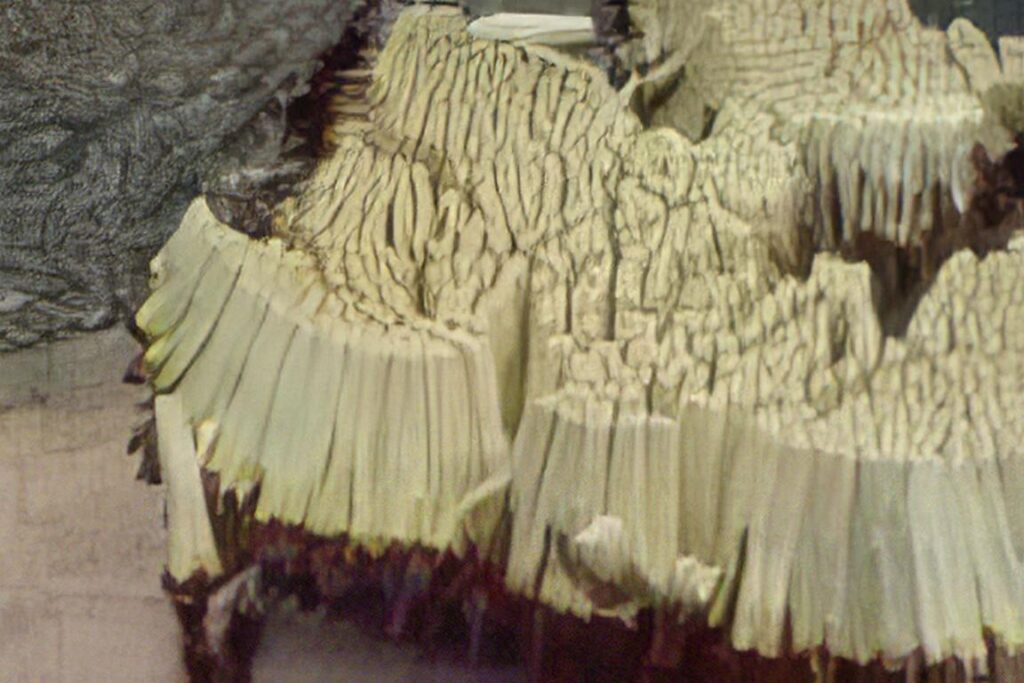
The inside of a wild Karuka is very similar to a cultivated Karuka. The soft spongy layer around the nuts between the stalk and the nuts can also be eaten. The wild Karuka nut looks much like a cultivated Karuka nut except that the outside is a little bit rougher with fibres and the end with the fibrous hairs is longer and has a sharper point.
The wild Karuka season
It is not easy to say when the prime season occurs. It is possible to have a good season for cultivated Karuka and yet in the same area to have a poor season for wild Karuka. All places do not have a good wild Karuka season in the same year. But the probable pattern is that the season is either at Christmas or mid-year or it can occur at both times. Also trees probably only have a clump of fruit every two years.
Pests and diseases
Wild Karuka does not seem to get many leaf spots even when it is planted next to a cultivated Karuka which has many disease leaf spots. Other diseases of wild Karuka seem very rare but because the plants are scattered and spread around in the bush, it may be that trees simply avoid the diseases.
Tree kangaroos are a problem with wild Karuka the same as they are with cultivated Karuka. People build similar traps to stop them from climbing the trees.
Pandanus antaresensis
No common Tok Pisin or English name; Tok ples names: Mendi: pem, pembras; Imbongu: kupili
The plant
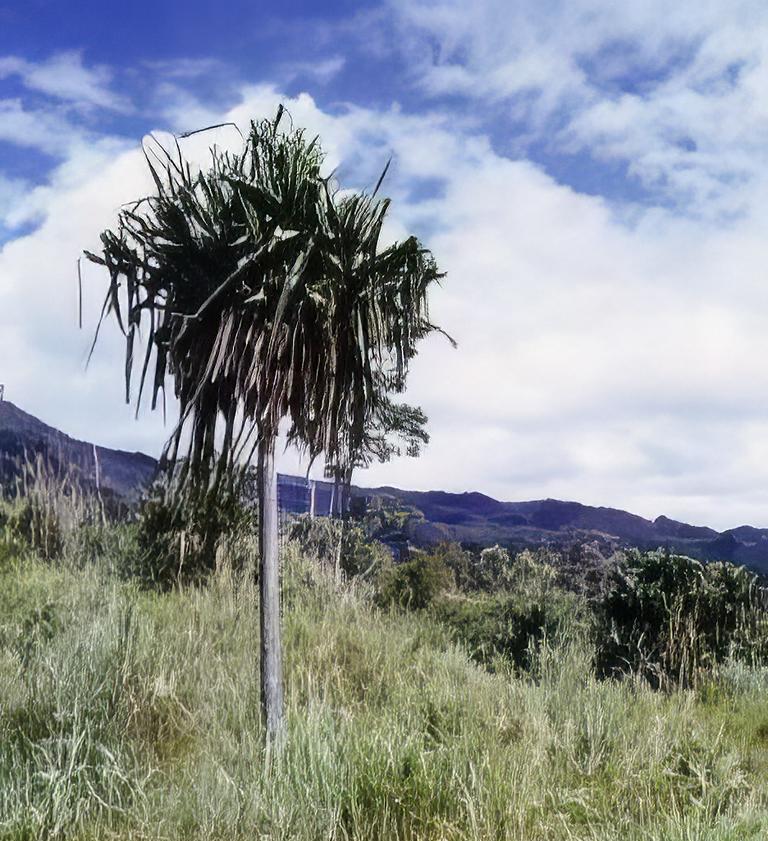
This pandanus grows naturally between about 1600 and 2500 metres altitude in the highlands. It often grows in swampy places. Most trees have several widely spaced branches. At the top of these, there is normally a shoot of leaves making a point which points upwards. The leaves are often a light green. They have thorns along the edge, although the thorns are normally less about the middle of the leaf. The cluster of nuts hangs down below the leaves on a long stalk.
The Pandanus antaresensis fruit
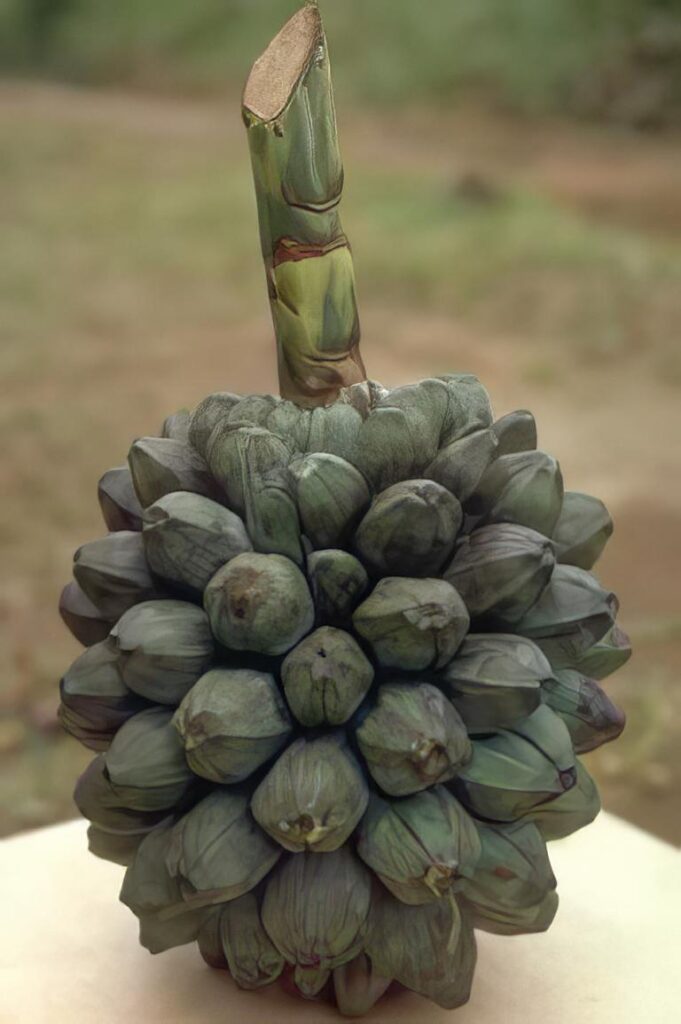
The fruit of this tree is made up of clusters of nuts grouped in groups of 4 or 5 nuts. Together they make up a round knobbed cluster about 30 cm across. As the fruit matures the cluster turns an orange colour and the small groups of nuts fall, one by one.
An individual group of nuts that fall look like this.
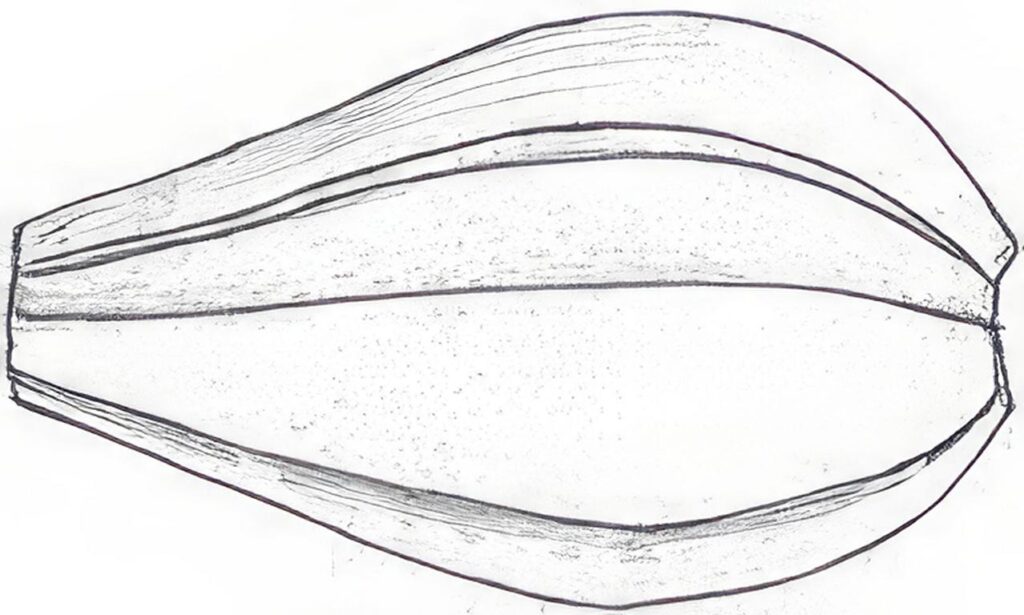
As the nuts dry out, lots of hairy-looking fibres can be seen. The shell is hard and must be broken with an axe or a stone. The nut inside is small. Because the shell is hard and the nut small some people don’t eat these nuts at all. Other people only eat them sometimes. But some people plant these pandanuses near their gardens and like the nuts
________________________________________________________________________________________________________________
Text and all photos at this article © Food Plant Solutions. The professional background and contact information of the author of this article can be found here.
.



